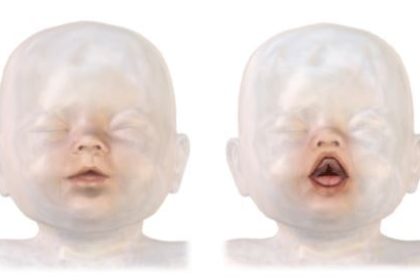
What is Cleft Lip and Palate Anomaly?
The defective union of the structures of the baby’s face area for various reasons during the development of the baby in the womb is called cleft lip and palate anomaly in the medical language.
How Does Cleft Lip and Palate Anomaly Occur?
Union of the cells that form the structure of the lip when the baby is in the mother’s womb starts at the 4th or 5th week and the union of the cells forming the palate structure is completed on the 8th or 9th week. The union of the lip and palate structure is completed by the 12th week of the baby’s development, but for the reason that is thought to be hereditary or environmental, a normal combination of a lip and palate cannot occur in about 1 in 1,000 babies and a surgical intervention is required to treat a child born with this deformity.
How Does Cleft Lip and Palate Occur in Babies?
- Genetic (hereditary) and environmental factors are thought to cause the formation of cleft lip and palate in babies.
- If the cleft lip and palate occurred in family members before, there is a possibility that new babies will also have this anomaly. However, even if the condition was not seen in any of the family members before, this can also manifest with syndromes such as Trisomy D and Trisomy E or with mutated genes.
- It should be regarded that rubella infection that the mother had in the first trimester of pregnancy, oligohydramnios (inadequate or complete deficiency of amniotic fluid in the womb), vitamin B deficiency, drug use such as steroid anticonvulsant, etc. can cause this anomaly.
How Cleft Lip and Palate (Harelip) is Treated?
Children born with cleft lip and palate need the help of different specialisations due to various comorbid problems. Right along with the cleft repair to be performed by plastic surgery, other treatments should be continued. Because as the patient gets older, various problems may arise regarding nutrition, dental health, hearing, speaking and psychological development. For this reason, the family must apply to the centres where they can get team support. Generally, in addition to a plastic surgeon, this type of team includes paediatrist, otorhinolaryngologist, speaking and hearing specialists, psychologist, genetic counsellor, dietitian, nurse and social counsellor. When to consult to which specialist is coordinated by the plastic surgeon.
Cleft Lip and Palate Frequently Asked Questions
The main purpose of cleft palate repair is to close the orifice in the palate and ensure that the child is fed and speaks appropriately. In these surgeries, various recovery problems and speaking disorders sometimes require a second attempt.
Consultant Plastic, Reconstructive and Aesthetic Surgeon Professor Yazar is available in his private practice based in Nisantasi, Istanbul for appointments to provide detailed and tailored information on the procedure.





You must be logged in to post a comment.